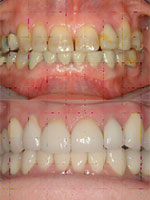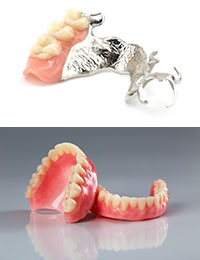General Dentistry
Fillings

Extractions
Wisdom Teeth

Root Canal Treatment


Crowns

Inlays and Onlays
You can sometimes have inlays or onlays instead of fillings. Fillings are soft to begin with and are moulded in the tooth which has been shaped to take and hold the filling. Inlays and onlays are made outside the mouth, usually in a dental laboratory, and then cemented to the tooth in the surgery. An inlay sits in a hole in the tooth. An onlay sits in the tooth and builds up its shape. Inlays and onlays can be made in tooth coloured porcelain, gold or a white filling material called composite. Inlays and onlays are strong and can last longer than fillings. They are especially suitable for the chewing surfaces of back teeth. Your dentist can match the colour to your other teeth.

Bridges

Removable Dentures

Hygiene Service
Airflow



